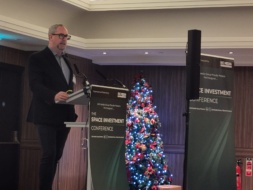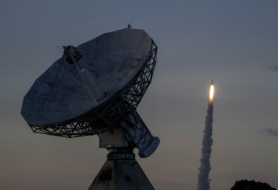PLD Space, Spain’s sole contestant in the European Launcher Challenge (ELC), unveiled its industrial strategy at the company’s Industry Days event yesterday. The company is targeting a production rate of 32 Miura 5 launchers annually by 2030.
To achieve this output, PLD plans to deepen its vertical integration, consolidate its supplier network, and begin to serialize its manufacturing process beginning in 2027. The company’s production plans also call for the parallel development of Miura Next, a heavy-lift vehicle capable of bringing 13 tons to orbit.
Better, faster, stronger: To try to bring high-cadence launch capabilities to the continent—and to do so cheaper and sooner than the rest of Europe’s launch contenders—PLD has focused on repurposing technologies that can work across its launch platforms.
“Our methods for producing engines, structures, or avionics are applicable to any launcher in our MIURA family, allowing us to scale and maintain production cadence at a fraction of the cost of current operators,” Raúl Verdú, PLD’s cofounder and chief business development officer, said in a statement.
Miura 5, which PLD expects to launch for the first time from French Guiana in 2026, has based many of its technology and components on those in Miura 1, a test vehicle that launched successfully in 2023.
Similarly, Miura Next will take many of the tested components from Miura 5 to bring even more thrust to the European launch market.
As part of the ELC, ESA has tied some of the funds to the successful demonstration of a payload capacity upgrade by 2028. Miura Next will need to fly by then to keep the ELC money rolling.
Further down the line, PLD also has plans to develop a crew-rated spacecraft that could bring four or five astronauts to space aboard Next.
Show me the money: ESA, Spain, and PLD have yet to announce how much the launch company will receive as part of the European Launcher Challenge, which caps at €169M ($197.3M) per launcher. The final decision for the total challenge funds should come at or before ESA’s November ministerial meeting, but PLD expects that at least some of the money will go toward strengthening its supplier network.
Since the beginning of 2024, PLD has invested a total of €50M in its Miura 5 supply chain consisting of 397 industrial partners, many of which are located in Spain and other European countries.
Ultimately, PLD’s industrial strategy will require a large-scale expansion of manufacturing, testing, and launch infrastructure in the coming years.




